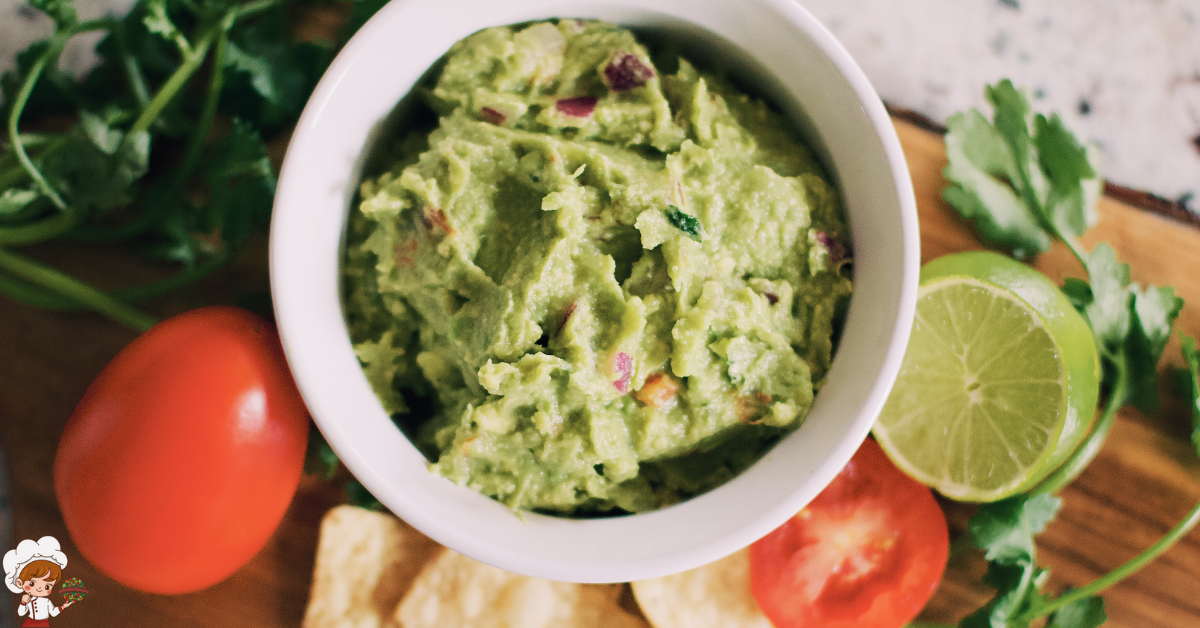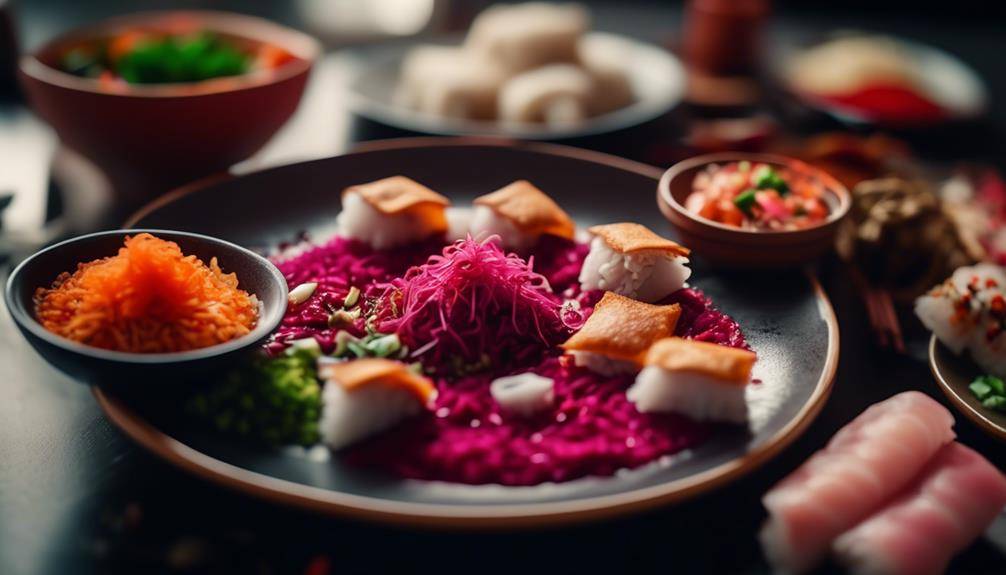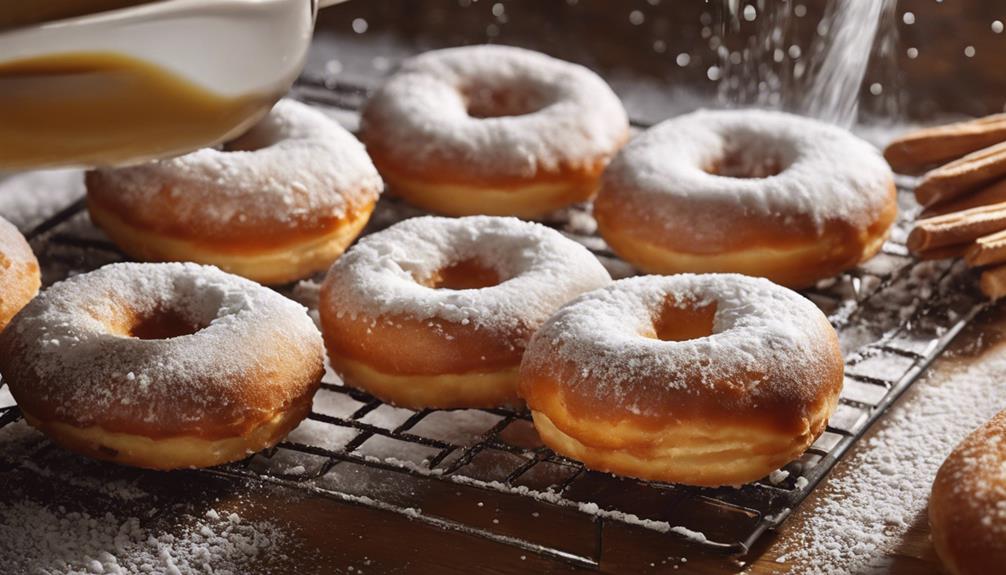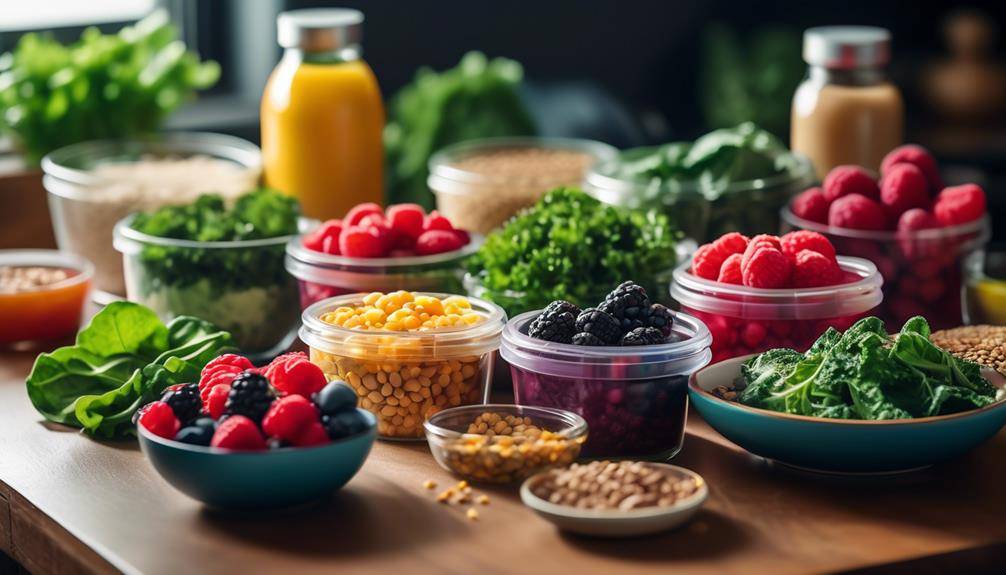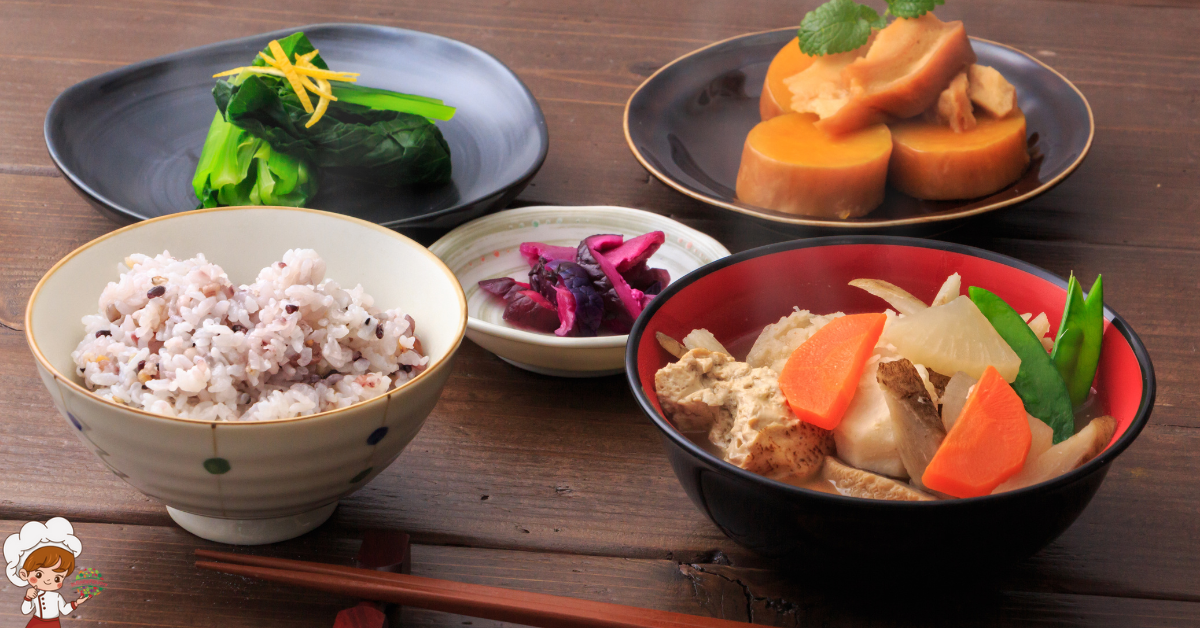The Best Classic Korean Pancake Recipes
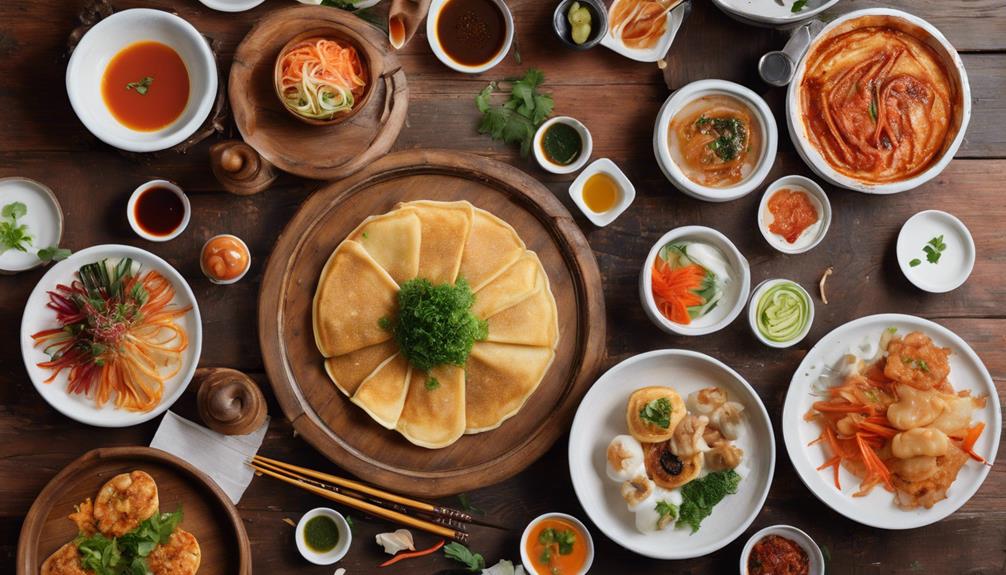
If you’re craving something delicious and savory, try making Classic Korean Pancake Recipes, known as jeon. These pancakes are versatile and can be made with ingredients like scallions in pajeon, kimchi in kimchi jeon, or a mix of seafood in haemul jeon. To start, combine flour with your choice of fresh vegetables or proteins to create a thick batter. Fry them up in a skillet until they’re golden brown and crispy. Serve them hot with a tasty dipping sauce. Keep exploring, and you’ll uncover more delicious variations and tips for perfecting your jeon!
Overview of Korean Pancakes
When you think of Korean cuisine, pancakes might not be the first dish that comes to mind, but they’re a delicious staple worth exploring. Known as jeon, these savory pancakes have a rich history that dates back centuries in Korea. Originally, they were created as a way to preserve seasonal vegetables and seafood, allowing families to enjoy the flavors of the harvest throughout the year.
Korean pancakes come in various forms, each with its unique twist. You might encounter the classic pajeon, made with scallions, or the kimchi jeon, which incorporates fermented kimchi for an extra kick. There’s also the seafood version, haemul jeon, packed with fresh fish and shellfish. These variations showcase Korea’s diverse culinary landscape and highlight how local ingredients influence traditional recipes.
As you explore these pancake variations, you’ll find that they’re not just a delicious dish but also a versatile one. You can enjoy them as a snack, appetizer, or even a main course. The cooking method typically involves frying the batter until it’s crispy on the outside and tender on the inside, resulting in a delightful texture.
Essential Ingredients for Jeon
To create delicious jeon, you’ll need a few essential ingredients that form the foundation of these savory pancakes. First, you’ll want a good base of flour. Most traditional jeon recipes use a mix of all-purpose flour and rice flour, giving the pancakes a delightful texture. If you’re looking for gluten-free options, almond flour or chickpea flour can be great ingredient substitutions.
Next, you can’t forget about the key ingredient: the filling. Jeon types vary widely, so you can experiment with vegetables like zucchini, scallions, or mushrooms, or even proteins like shrimp or beef. The versatility of jeon means you can use whatever ingredients you have on hand. If you’re missing a specific vegetable, don’t worry! Feel free to swap in what you prefer or have in your fridge.
Another important component is the seasoning. You’ll typically need salt and pepper to enhance the flavors, but don’t hesitate to add other spices or herbs to suit your taste. A splash of soy sauce or sesame oil can elevate the umami profile of your jeon.
Classic Potato Jeon Recipe
Potato jeon is a beloved classic that brings comfort and deliciousness to any meal. With humble potato origins, this dish highlights the versatility of a staple ingredient. Throughout pancake history, various cultures have created their own versions, but Korean potato jeon stands out for its simplicity and flavor.
To make potato jeon, you’ll need a few key ingredients: fresh potatoes, flour, salt, and water. Start by peeling and grating the potatoes. As you grate, you’ll notice the starchy goodness release, which is essential for that crispy texture. After grating, let the potatoes sit for a few minutes to allow the starch to settle. Drain off any excess liquid, but keep some starch for binding.
In a mixing bowl, combine the grated potatoes with a little flour, salt, and just enough water to form a thick batter. Heat a non-stick skillet over medium heat and add a splash of oil. Once the oil is hot, spoon your potato mixture onto the skillet, flattening it gently to create a round pancake. Cook until golden brown on one side, then flip and cook the other side until crispy.
Serve your potato jeon hot, perhaps with some soy sauce or a spicy dipping sauce. The irresistible crunch and savory flavor will make it a favorite at your table. So go ahead, follow this classic recipe, and enjoy a taste of Korea’s delightful culinary heritage!
Vegetable Jeon Variations
Vegetable jeon variations offer a delightful way to incorporate a range of fresh produce into your meals. You can easily whip up these savory pancakes using whatever vegetables you have on hand. Start with kimchi jeon for a spicy kick; the tangy flavor of kimchi combined with the crispy texture creates a delicious treat. If you’re in the mood for something earthy, try mushroom jeon. Sautéed mushrooms blend beautifully with the batter, making each bite bursting with umami.
Zucchini jeon is another fantastic option. Grate the zucchini and mix it with flour, eggs, and a pinch of salt for a light, fluffy pancake. For a fresh herb twist, chive jeon adds a delightful onion-like flavor that pairs well with dipping sauce. Sweet potato jeon is especially satisfying; the natural sweetness of the sweet potatoes creates a unique balance to the savory pancake.
Don’t forget spinach jeon! It’s packed with nutrients and adds a vibrant green color to your plate. Onion jeon offers a sweet and savory flavor profile, while bell pepper jeon brings a crunchy, sweet bite that’s hard to resist. Each of these variations allows you to explore different textures and flavors, making your meal more exciting. So go ahead, experiment with these vegetable combinations and enjoy a deliciously versatile dish that’s both healthy and satisfying!
Seafood Jeon Delight
Plunge into the world of seafood jeon, where fresh flavors and crispy textures come together in a delightful way. This Korean pancake variation offers a unique twist by incorporating various seafood varieties like shrimp, squid, and clams. Each ingredient brings its own distinct taste, making every bite a celebration of the ocean.
To create the perfect seafood jeon, you’ll want to choose high-quality seafood. Fresh shrimp adds a sweet crunch, while tender squid provides a delightful chew. You can also experiment with clams or even fish fillets for added flavor. Once you’ve selected your seafood, the cooking techniques play a vital role. Start by mixing your seafood with a light batter made from flour, water, and a pinch of salt. This batter will coat the seafood, guaranteeing each piece retains its moisture while achieving a crispy exterior.
Heat a generous amount of oil in a frying pan, and pour in your seafood batter. As it sizzles, you’ll see the edges turn golden brown. Flip it carefully to guarantee an even cook. The key is to maintain the right temperature; too low, and you’ll end up with a soggy pancake, too high, and it might burn. Once done, serve your seafood jeon hot, perhaps with a soy dipping sauce for an extra layer of flavor. This dish brings a taste of the sea to your table, inviting everyone to indulge in its savory goodness. Enjoy the delightful crunch and fresh taste of seafood jeon!
Tips for Perfect Pancakes
To make your Korean pancakes truly shine, start with fresh ingredients. It’s essential to control the cooking temperature so you get that perfect golden-brown finish. With these tips, you’ll elevate your pancake game to a whole new level.
Use Fresh Ingredients
Using fresh ingredients can make all the difference in your Korean pancakes. When you choose fresh produce, you enhance not only the taste but also the texture of your pancakes. Opt for seasonal flavors like vibrant spring onions, crisp zucchini, or ripe peppers, as they offer the best taste and nutrition. Seasonal ingredients are at their peak, bursting with flavor that elevates your dish.
Don’t forget about the importance of freshness in your batter. Using fresh eggs and high-quality flour can greatly impact the overall outcome. If you can, grind your flour just before using it for an extra touch of freshness.
When you incorporate fresh ingredients, you’ll also notice how they contribute to the visual appeal of your pancakes. The bright colors of fresh vegetables make your dish more enticing.
Control Cooking Temperature
Achieving the perfect Korean pancake starts with controlling the cooking temperature. The right heat is essential for a golden, crispy exterior while keeping the inside tender and flavorful. Begin by preheating your pan over medium heat. This temperature allows for even cooking without burning the batter.
Once your pan’s hot, adjust your temperature techniques as you add the batter. If it sizzles immediately, you’ve got the right heat. If it doesn’t, let the pan heat up a bit more. For thicker pancakes, lower the heat after the first side is cooked to prevent burning while ensuring the center cooks through.
When using different frying methods, such as shallow frying or deep frying, keep an eye on the oil temperature. If it’s too hot, the pancakes may cook too quickly and burn. If it’s too cool, they’ll absorb oil and become greasy. A good rule of thumb is to test the oil with a small drop of batter; it should bubble and rise to the surface.
Serving Suggestions and Dipping Sauces
When it comes to serving Korean pancakes, pairing them with the right dipping sauces can elevate your meal to new heights. The delicate flavors of the pancakes create a perfect canvas for a variety of sauce selections that enhance your dining experience. You can’t go wrong with the classic soy sauce and vinegar mix, often enhanced with a dash of sesame oil and a sprinkle of red pepper flakes. This simple yet flavorful concoction complements the savory notes of your pancakes beautifully.
For a twist, consider a gochujang-based sauce. Mixing gochujang, honey, and a bit of lime juice creates a sweet and spicy dipping sauce that adds an exciting kick to your pancake pairings. If you prefer something creamy, a yogurt sauce with garlic and herbs can provide a revitalizing contrast to the warm, crispy pancakes.
Don’t forget to serve your pancakes with fresh sides like kimchi or pickled vegetables. These additions not only provide a delightful crunch but also balance the richness of the pancakes. You might also want to try serving them with a side of steamed rice for a heartier meal.
Experimenting with different sauce selections will help you discover your favorite combinations. So, gather your friends or family, whip up a batch of Korean pancakes, and plunge into the delicious world of dipping sauces. Enjoy the process, and let your taste buds guide you to the perfect pairing!
Frequently Asked Questions: Classic Korean Pancake Recipes
Can I Freeze Leftover Korean Pancakes for Later Use?
Yes, you can freeze leftover pancakes! Just wrap them tightly in plastic wrap or foil. For reheating, pop them in the toaster or skillet. These freezing tips guarantee they stay delicious for your next meal!
What Types of Flour Are Best for Making Jeon?
When making jeon, you’ll want to choose flour types that enhance the pancake texture. All-purpose flour gives a chewy bite, while rice flour creates a crispier finish, making your pancakes deliciously unique.
How Can I Make Gluten-Free Korean Pancakes?
To make gluten-free Korean pancakes, use gluten-free alternatives like rice flour or almond flour. Experiment with pancake variations by adding vegetables or seafood for flavor, ensuring a delicious, satisfying dish everyone can enjoy.
Are There Any Traditional Side Dishes Served With Jeon?
When enjoying jeon, you’ll often find traditional side dishes like pickled radishes or kimchi. Pair your jeon with a soy sauce dip for added flavor, and explore various jeon variations to enhance your meal experience.
How Do I Adjust Cooking Times for Thicker Pancakes?
To adjust cooking times for thicker pancakes, lower the cooking temperature slightly. This allows the inside to cook through without burning the outside. Keep an eye on them, flipping when they’re golden brown.
Conclusion
To sum up, Korean pancakes, or jeon, offer a delightful way to enjoy various ingredients, from potatoes to seafood. With just a few essential ingredients and simple techniques, you can whip up these savory treats in no time. Don’t forget to experiment with different vegetable combinations and dipping sauces to elevate your meal. So grab your skillet, gather your ingredients, and get ready to savor the delicious flavors of homemade Korean pancakes!



